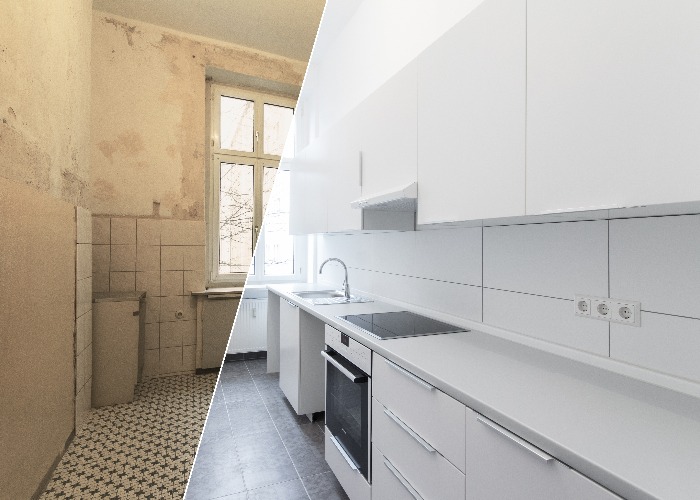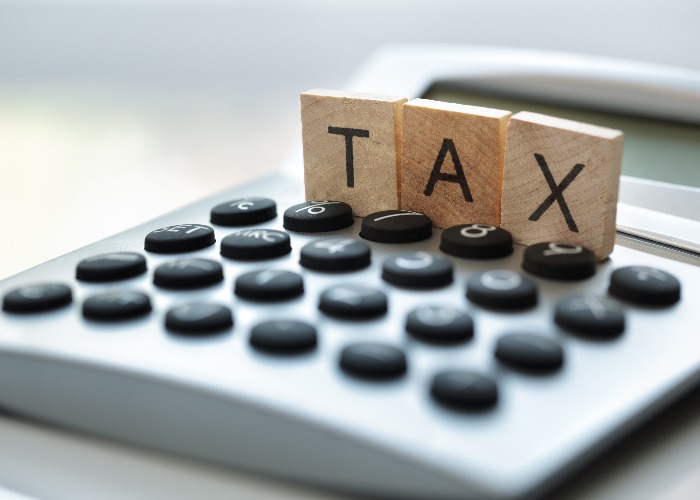Property refurbishment: costs, financing, taxes and finding the right property

There’s been a spike in the number of people fixing up properties rather than renting them out. Is property refurbishment the best way to make money from bricks & mortar?
Sections
Switching from renting to refurbishing
With the changes to the tax regime for mortgage interest on buy-to-let properties being felt for the first time by landlords in this year’s tax bill, many are rethinking their investments.
In its Q3 Rental Index, letting agent Belvoir said the number of landlords selling property was increasing.
Figures from UK Finance also show that fewer buy-to-let mortgages are being taken out, with lending in November for buy-to-let purchases down 11.1%.
But although buy-to-let lending has been declining steadily for the past couple of years, when it comes to finance for developing properties, it's a different story.
The Bridging Trends report for 2018, compiled by bridging provider MT Finance, showed that bridging loans reached their highest level ever last year at £766.9 million, an increase of £232.8 million on the previous year.
Property refurbishment was the most popular reason for bridging, accounting for 28% of loans, up from 23% the previous year.
Compare bridging loans, buy-to-let mortgage rates and more with B2B Finance
Landlord experience ideal
With the report also revealing that short-term finance has become cheaper, many property investors keen to stay in the game may well be considering changing their strategy from renting out properties to fixing them up.
The proliferation of TV shows such as Homes Under the Hammer, which fill our screens with tales of not just property developers but also lawyers, secretaries and IT professionals making money refurbishing properties, leads many to believe anyone can do it.
But just how easy is it to move into property development?
It may be easier if you’re a long-established landlord, says Julian Bryson, owner of property developer Renovista.
“The concept of switching business models to development is a good one if the portfolio is showing a decent slug of equity,” he says.
Need landlord insurance? Get a quote from Axa
Financing
Although financing numbers are up and rates are down, convincing lenders to loan to you as an inexperienced developer is much more difficult than obtaining buy-to-let funding, says Matthew Fleming-Duffy, director at Cherry Mortgage and Finance.
Whereas residential and buy-to-let applications are assessed largely based on financial documents, Fleming-Duffy says development lenders will scrutinise an applicant’s experience in the field.
In this regard, he says buy-to-let experience could help.
“If you have owned buy-to-lets and you’ve had new kitchens installed and maintained properties over the last few years it does add weight to your application.”
Compare bridging loans, buy-to-let mortgage rates and more with B2B Finance
Start small

He advises amateur developers to start with a property refurbishment to build up their experience rather than a new build on a vacant plot.
Bryson has similar advice.
“If you have cash and can use that to do a few smaller deals to create a track record that would be wise.
However, he adds: “I’d definitely explore even limited funding because if the aim is to carve out a career as a developer, a track record is key and once you’re a lender’s client things loosen up in terms of being an acceptable risk going forward.”
Find the right paint for your project on the Dulux site
Get specialist advice
If you’re looking to move into development, your first port of call should be to speak with a specialist broker about finance.
While you may not need one for residential or even buy-to-let financing, development finance is more specialised and much of it is provided by private finance houses that aren’t accessible to consumers direct.
A broker will also be able to advise you on whether releasing equity from your buy-to-let or residential property might be cheaper in the first instance.
Compare bridging loans, buy-to-let mortgage rates and more with B2B Finance
Finding the right property
Once you’ve worked out what you can afford, the next step is finding the right property.
"There are lots of properties out there that are ripe for development,” says Fleming-Duffy.
“There are vacant commercial properties on the high street that can be converted into residential, there are old houses that can be converted into flats and in London we are seeing more cases where you’ve had a house that was converted into two flats now being converted back into a big house because these places are worth more now as houses than they were as flats.”
You can find properties at auction, but it’s also a good idea to become friendly with as many agents as possible in your area to let them know your budget and what you’re looking for.
If you’re a cash buyer you’ll likely be top of their list when a property requiring a quick sale comes up.
However, it is tough to make the numbers add up in a stagnant market, says Bryson. “Be ruthless on meeting the numbers.
“Assume hundreds of opportunities might have to cross the desk before one fits, don’t rely on the market rising, assume one year-plus for resales and include a 10% contingency on everything.”
Compare bridging loans, buy-to-let mortgage rates and more with B2B Finance
Tax implications

Bryson says one of the biggest barriers to turning a profit is stamp duty – since April 2016 anyone purchasing a second home has been required to pay an extra 3% Stamp Duty Land Tax (SDLT).
However, a potential loophole opened up on this point in February.
A Bristol tax tribunal ruled that a couple who bought a buy-to-let property did not have to pay the extra 3% because it was uninhabitable.
Simon Nosworthy, partner at law firm Osbornes, says he this ruling is very interesting for property developers, but advised caution.
“The payment of higher rates of SDLT has been very lucrative to the revenue and it’s likely that they will challenge anyone that seeks to assert that a property is uninhabitable.”
Even if you find a property that escapes the additional stamp duty and find yourself with a profit after accounting for all the costs of your development, sadly you will still have to hand over a chunk of that to the taxman.
One big difference between property development and buy-to-let investment is that rather than paying capital gains tax, you’ll have to pay income tax on any gains.
There’s a lot to consider if you’re looking to move into property development, but if you’ve had some success in buy-to-let you probably already have something of a head start on those who haven’t.
Plus, if a development doesn’t go to plan and turn a profit, you’ll also have the skills to rent it out as a back-up plan.
Comments
Be the first to comment
Do you want to comment on this article? You need to be signed in for this feature